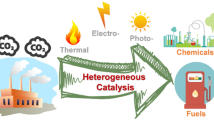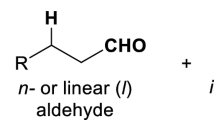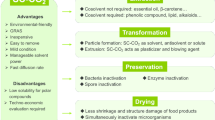Abstract
An overview in the field of chemical kinetics on the thermal decomposition of di-tert-butyl peroxide (DTBP) has been performed in this study. Nowadays, DTBP has been a model compound for studying thermokinetics of organic peroxide and standardization of the DSC or adiabatic calorimeter. Thermal decompositions of DTBP in neat state or solution are conducted by heat flow or adiabatic calorimeters. Chemical kinetics on the thermal decomposition of DTBP obeyed n-th-order reaction and the type of Arrhenius equation. Order of reaction is first without any exception. DTBP in alkyl or aromatic hydrocarbon solvent behaves with excellent precision in activation energy with an averaged value of 157.0 (±4.1) and 159.7(±3.9) kJ mol−1 determined by DSC and adiabatic calorimeters, respectively. Frequency factors A (in s−1) in the form of logA are determined to be 15.8 (±1.1) and 16.3(±0.5) by DSC and adiabatic calorimeters, respectively. In the neat state of DTBP, activation energy and frequency factor in logA both possess the lower value of 128.4 (±6.2) kJ mol−1 and 12.2 (±0.8) determined by DSC. In ARC, these respective parameters are determined to be 142.0 (±17.7) kJ mol−1 and 15.5 (±1.3). Arrhenius parameters acquired from published literature with regard to the kinetics and mechanism on thermal decomposition of DTBP are summarized and discussed.




Similar content being viewed by others
Abbreviations
- A :
-
Frequency factor [s−1 M1−n]
- a,b,c :
-
Constant [dimensionless]
- C p :
-
Heat capacity at constant pressure [kJ kg−1 K−1]
- C pb :
-
Heat capacity of test bomb at constant pressure [kJ kg−1 K−1]
- C ps :
-
Heat capacity of reactant at constant pressure [kJ kg−1 K−1]
- D :
-
Bond dissociation energy [kJ mol−1]
- E a :
-
Activation energy [kJ mol−1]
- E 0 :
-
Activation energy in transition state theory [kJ mol−1]
- ΔE a :
-
Activation energy difference between Hydrogen abstraction and β C–C scission [kJ mol−1]
- e :
-
Natural exponential [dimensionless]
- g(α):
-
A constant from the integral of kinetic model [dimensionless]
- ΔH :
-
Heat of reaction [kJ kg−1]
- ΔH 0≠ :
-
Enthalpy of activation
- h :
-
Planck constant [6.6262 × 10−34 J s]
- k :
-
Rate constant [s−1 M1−n]
- k 2 :
-
Rate constant of recombination [s−1 M1−n]
- k B :
-
Boltzmann constant [1.38 × 10−23 J K−1]
- k D :
-
Rate constant of hydrogen abstraction from DTBP [s−1 M1−n]
- k e :
-
Rate constant of ethane formation [s−1 M1−n]
- k H :
-
Rate constant of hydrogen abstraction from solvent [s−1 M1−n]
- k β :
-
Rate constant of β scission [s−1]
- m b :
-
Mass of test bomb used in adiabatic calorimeter [kg]
- m s :
-
Mass of reactant [kg]
- n :
-
Order of reaction [dimensionless]
- R :
-
Ideal gas constant [8.314 J g−1 K−1]
- ΔS 0≠ :
-
Entropy of activation
- T 0 :
-
Onset temperature of exothermic reaction [K]
- T max :
-
Maximum temperature of exothermic reaction [K]
- T p :
-
Temperature of maximum reaction rate [K]
- T α :
-
Temperature at a specified degree of conversion [K]
- ΔT AD :
-
Adiabatic temperature rise with the φ value of 1 [°C or K]
- ΔT ad :
-
Adiabatic temperature rise with the φ value >1 [°C or K]
- X i, Y i, Z i :
-
Constant of linear regression [dimensionless]
- dH dt −1 :
-
Heat-releasing power [Ws−1]
- dT dt −1 :
-
Self-heat rate [°C min−1]
- α :
-
Degree of conversion [dimensionless]
- β :
-
Heating rate of calorimeter [°C min−1]
- ϕ :
-
Thermal inertia [dimensionless]
- dαdt −1 :
-
Rate of conversion [dimensionless]
- β :
-
β C–C scission
- H:
-
Hydrogen abstraction
References
Ho TC, Duh YS, Chen JR. Case studies of incidents in runaway reactions and emergency relief. Process Saf Prog. 1998;17:259–62.
Duh YS, Wu XH, Kao CS. Hazard ratings for organic peroxides. Process Saf Prog. 2008;27:89–99.
Bach RD, Ayala PY, Schlegel HB. A reassessment of the bond dissociation energies of peroxides. An ab Initio study. J Am Chem Soc. 1996;118:12758–65.
Benson SW, Shaw R. Thermochemistry of organic peroxides, hydroperoxides, polyoxides, and their radicals. In: Swern D, editor. organic peroxides. New York: Wiely; 1970. p. 251–306.
Matsugo S, Saito I. Dialkyl peroxides. In: Ando W, editor. Organic peroxides. New York: Wiely; 1992. p. 157–94.
Aldeeb AA, Rogers WJ, Mannan MS. Theoretical and experimental methods for the evaluation of reactive chemical hazards. Process Saf Environ Prot. 2002;80:141–9.
Duh YS, Wang WF, Kao CS. Novel validation on pressure as a determination of onset point for exothermic decomposition of DTBP. J Therm Anal Calorim. 2014;116:1233–9.
Duh YS, Yo JM, Lee WL, Kao CS, Hsu JM. Thermal decompositions of dialkyl peroxides studied by DSC. J Therm Anal Calorim. 2014;118:339–47.
Shaw DH, Pritchard HO. Thermal decomposition of di-tert-butyl peroxide at high pressure. Can J Chem. 1968;46:2722–4.
Blaine R. The search for kinetic reference materials for adiabatic and differential calorimetry. J Therm Anal Calorim. 2011;106:25–31.
ASTM E2781-11 Standard practice for evaluation of methods for determination of kinetic parameters by thermal analysis.
Kersten RJA, Boers MN, Stork MM, Visser C. Results of a Round-Robin with di-tertbutyl peroxide in various adiabatic equipment for assessment of runaway reaction hazards. J Loss Prev Proc Ind. 2005;18:145–51.
ASTM E698-16 Standard test method for arrhenius kinetic constants for thermally unstable materials using differential scanning calorimetry and the Flynn/Wall/Ozawa Method.
TA4000 operation instructions, Mettler Company; 1993.
Varions ARC. Manual. Austin: C.S.I.
Twonsend DI, Tou JC. Thermal hazard evaluation by an accelerating rate calorimeter. Thermochim Acta. 1980;37:1–30.
Kissinger HE. Reaction kinetics in differential thermal analysis. Anal Chem. 1957;29:109–17.
Borchardt HJ, Daniels F. The application of differential thermal analysis to the study of reaction kinetics. J Am Chem Soc. 1957;79:41–6.
Friedman HL. Kinetics of thermal degradation of char-forming plastics from thermo-gravimetry. Application to a phenolic plastic. J Poly Sci C. 1965;50:183–95.
Ozawa T. A new method analyzing thermogravimetric data. Bull Chem Soc Jpn. 1965;38:1881–6.
Ozawa T. Thermal analysis-review and prospect. Thermochim Acta. 2000;355:35–42.
Flynn JH, Wall LA. General treatment of the thermogravimetry of polymers. J Res Natl Bur Stand Sect A. 1966;70:487–523.
Doyle C. Estimating isothermal life from thermogravimetric data. J Appl Polym Sci. 1962;6:639–42.
ASTM E2041-13, Standard test method for estimating kinetic parameters by differential scanning calorimeter using the Borchardt and Daniels method.
ASTM E2890-12, Standard test method for estimating kinetic parameters for thermally unstable materials by differential scanning calorimeter using the Kissinger method.
Vyazovkin S, Chrissafis K, Griado JM, Perez-Maqueda LA, Popescu C, Sbirrazzuoli N. ICTAC Kinetics Committee recommendations for performing kinetic computations on thermal analysis. Thermochim Acta. 2011;520:1–19.
Vyazovkin S, Burnham AK, Di Lorenzo ML, Koga N, Pijolat M, Roduit B, Sbirrazzuoli N, Sunol JJ. ICTAC kinetics committee recommendations for collecting experimental thermal analysis data for kinetic computations. Thermochim Acta. 2014;590:1–23.
ASTM E1981-12 Standard guide for assessing thermal stability of materials by methods of accelerating rate calorimetry.
Thermal safety software. Cheminform St. Petersburg Ltd., St. Petersburg.
Advanced kinetics and technology AG.
Wrabetz K, Woog J. Investigation of the thermal degradation of di-tert-butyl peroxide in the capillary column of a gas chromatograph. Fres Zeit Anal Chem. 1987;329:487–9.
Cafferata LFR, Manzione CJ. Kinetics and mechanism of gas-phase thermolysis using headspace-gas chromatographic analysis. J Chromatogr Sci. 2001;39:45–8.
ASTM E967-14 Standard test method for temperature calibration of differential scanning calorimeters and differential thermal analyzers.
ASTM E968-14 Standard practice for heat flow calibration of differential scanning calorimeters.
Gimzewski E, Audley G. Thermal hazards: calculating adiabatic behavior from DSC data. Thermochim Acta. 1993;214:129–40.
Wu SH, Chou HC, Pan RN, Huang YH, Hirng JJ, Chi JH, Shu CM. Thermal hazard analyses of organic and inorganic peroxides by calorimetric approaches. J Therm Anal Calorim. 2012;109:355–64.
Liu SH, Lin CP, Shu CM. Thermokinetic parameters and thermal hazard evaluation for three organic peroxides by DSC and TAM ΙΙΙ. J Them Anal Calorim. 2011;106:165–72.
MacNeil DD, Trussler S, Fortier H, Dahn JR. A novel hermetic differential scanning calorimeter sample crucible. Thermochim Acta. 2002;386:153–60.
Hou HY, Liao TS, Duh YS, Shu CM. Thermal hazards studies for dicumyl peroxide by DSC and TAM. J Therm Anal Calorim. 2006;83:167–71.
Chu YC, Chen JR, Tseng JM, Tsai LC, Shu CM. Evaluation of runaway thermal reactions of di-tert-butyl peroxide employing calorimetric approaches. J Them Anal Calorim. 2011;106:165–72.
Tou J, Whiting L. The thermokinetic performance of an accelerating rate calorimeter. Thermochim Acta. 1981;48:21–42.
Duh YS, Kao CS, Hwang HH, Lee WWL. Thermal decomposition kinetics of cumene hydroperoxide. Process Saf Environ Prot. 1998;76:271–6.
Iizuka Y, Surianarayanan M. Comprehensive kinetic model for adiabatic decomposition of di-tert-butyl peroxide using BatchCAD. Ind Eng Chem Res. 2003;42:2987–95.
Wang WY, Duh YS, Shu CM. Evaluation of adiabatic runaway reaction and vent sizing for emergency relief from DSC. J Therm Anal Calorim. 2006;85:225–34.
Torfs JCM, Deij L, Dorrepaal AJ, Heijens JC. Determination of Arrhenius kinetic constants by differential scanning calorimetry. Anal Chem. 1984;56:2863–7.
Sanchirico R. Adiabatic behavior of thermal unstable compounds evaluated by means of dynamic scanning calorimetric (DSC) techniques. AIChE J. 2013;59:3806–15.
Kossoy AA, Singh J, Koludarova EY. Mathematical methods for application of experimental adiabatic data—an update and extension. J Loss Prev Proc Ind. 2015;33:88–100.
Leung J, Fauske H, Fisher H. Thermal runaway reactions in a low thermal inertia apparatus. Thermochim Acta. 1986;104:13–29.
Iwata Y. Thermal decomposition behavior of di-tert-butyl peroxide measured by differential adiabatic calorimeter. Chem Eng Trans. 2013;31:1–6.
Agrawal RK. On the compensation effect. J Them Anal Calorim. 1986;31:73–86.
Mianowski A, Bigda R. The Kissinger law and isokinetic effect Part Ι. Most common solutions of thermokineic equations. J Them Anal Calorim. 2003;74:953–73.
Mianowski A, Bigda R. The Kissinger law and isokinetic effect Part ΙΙ. Experimental analysis. J Them Anal Calorim. 2004;75:355–72.
Brown ME, Galwey AK. The significance of “Compensation effects” appearing in data published in “Computational aspects of kinetic analysis”: ICTAC project, 2000. Thermochim Acta. 2002;387:173–83.
Bell ER, Rust FF, Vaughan WE. Decompositions of dialkyl peroxides. IV. Decomposition of pure liquid peroxide. J Am Chem Soc. 1950;72:337–8.
Sebbar N, Bozzelli JW, Bockhorn H. Kinetic study of di-tert-butyl peroxide: thermal decomposition and product reaction pathways. Int J Chem Kinet. 2015;47:133–61.
Fittschen C, Hippler H, Viskolcz B. The β C–C bond scission in alkoxy radicals: thermal unimolecular decomposition of t-butoxy radicals. Phys Chem Chem Phys. 2000;2:1677–83.
Buback M, Kling M, Schmatz S. Decomposition of tertiary alkoxy radicals. Z Phys Chem. 2005;219:1205–22.
Choo KY, Benson SW. Arrhenius parameters for the alkoxy radical decomposition reactions. Int J Chem Kinet. 1981;13:833–44.
Tsentalovich YP, Kulik LV, Gritsan NP, Yurkovskaya AV. Solvent effect on the rate of β-scission of the tert-butoxyl radical. J Phys Chem. 1998;102:7975–80.
Weber M, Fischer H. Absolute rate constants for the β-scission and hydrogen abstraction reactions of the tert-butoxyl radical and for several radical rearrangements: evaluating delayed radical formations by time-resolved electron spin resonance. J Am Chem Soc. 1999;121:7381–8.
Song SA, Choo KY. Study of the kinetics and mechanisms of alkoxy radical reactions in the gas phase (Ι). Arrhenius parameters for t-butoxy radical reactions with isobutene and cyclohexane. Bull Kore Chem Soc. 1984;5:16–21.
Kennedy BR, Ingold KU. Reactions of alkoxy radicals Ι. Hydrogen atom abstraction from substituted toluenes. Can J Chem. 1966;44:2381–5.
Author information
Authors and Affiliations
Corresponding author
Rights and permissions
About this article
Cite this article
Duh, YS., Kao, CS. & Lee, WL.W. Chemical kinetics on thermal decompositions of di-tert-butyl peroxide studied by calorimetry. J Therm Anal Calorim 127, 1071–1087 (2017). https://doi.org/10.1007/s10973-016-5859-y
Received:
Accepted:
Published:
Issue Date:
DOI: https://doi.org/10.1007/s10973-016-5859-y




